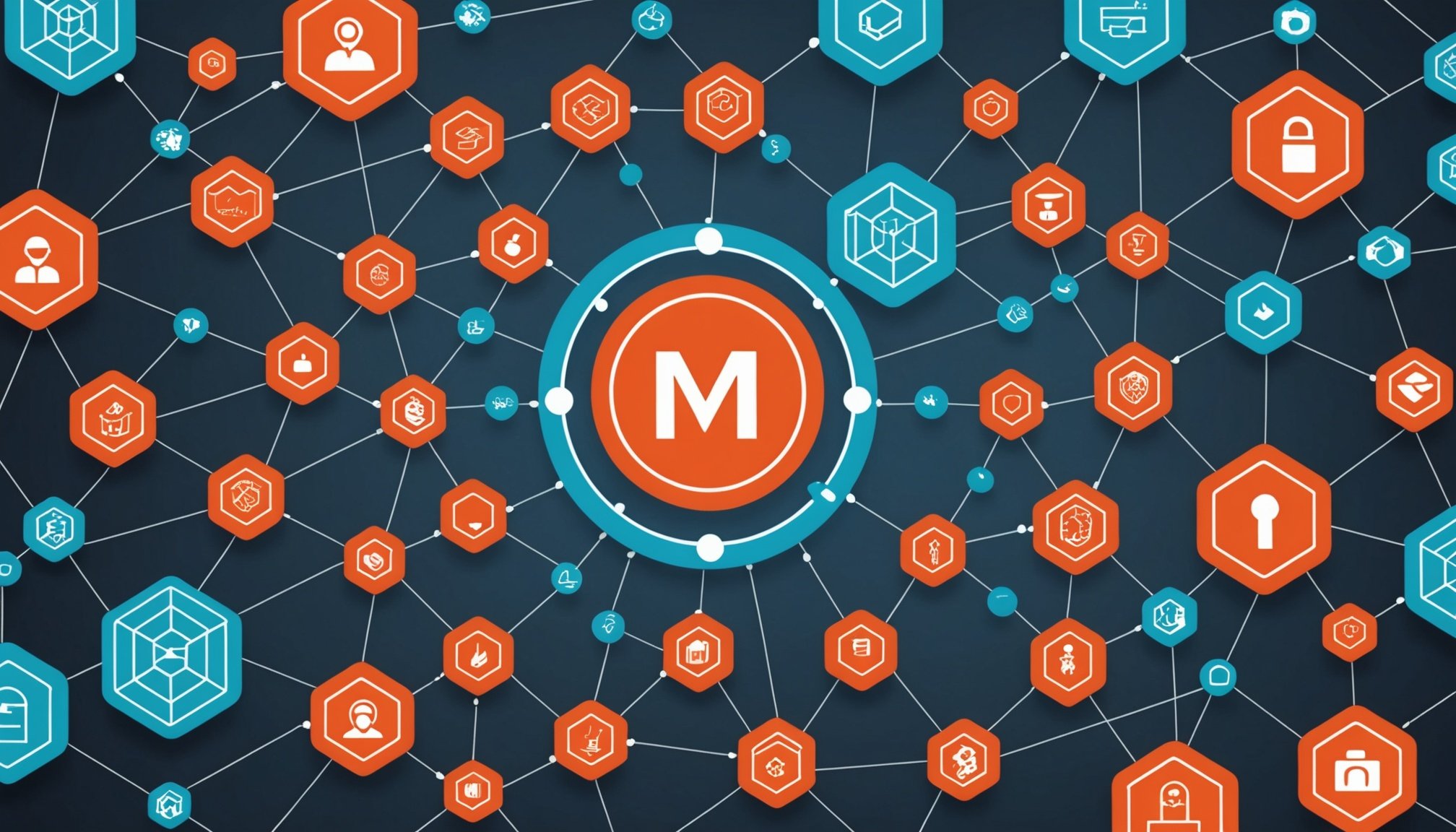Understanding Microservices Security
Microservices have redefined the way applications are built, offering increased scalability and flexibility. Yet, with this architectural shift comes an enhanced need for microservices security. These distributed systems rely on intricate communication networks, and any vulnerability in one microservice can potentially compromise the entire ecosystem.
In the realm of microservices, security is paramount. This is especially true when deploying on platforms like Kubernetes, which support scaling but present unique security challenges. As microservices involve numerous independent components, ensuring a secure architecture becomes critical to protect sensitive data and maintain service integrity.
In the same genre : How to enhance your google calendar with more colors for better organization
Key challenges in microservices security include managing authentication and authorization across services, securing data in transit and at rest, and monitoring potential breaches. The decentralized nature of microservices means that traditional security paradigms need adaptation.
To tackle these challenges, adopting security protocols like mutual TLS, implementing robust identity management, and employing a service mesh can provide enhanced security. Furthermore, regular audits, proactive threat modeling, and using security tools tailored for Kubernetes environments ensure a resilient security posture. Ultimately, by prioritizing security in microservices architecture, organizations can leverage their benefits without compromising on safety.
Also to discover : Revolutionize your designs with dynamic website mockups
Introduction to mTLS
mTLS, or mutual TLS, is a security protocol extension of the traditional Transport Layer Security (TLS). While TLS ensures secure communication between a client and a server by authenticating the server, mTLS enhances this by requiring both parties to authenticate each other. This dual authentication process significantly fortifies the security posture in microservices architectures, where ensuring trust between independent services is crucial.
When comparing mTLS to traditional TLS, the primary distinction lies in this bidirectional authentication. Traditional TLS only authenticates the server, leaving potential gaps in client trust. mTLS closes this gap, making it ideal for complex systems such as those deployed on Kubernetes. In Kubernetes environments, implementing mTLS ensures secure communication between pods and services, securing data in transit comprehensively.
mTLS plays a pivotal role in enhancing security frameworks by preventing unauthorized access and ensuring that all participating entities in a network are trusted. This is particularly vital in microservices security, where the dispersion of services across containers calls for robust security measures. By incorporating mTLS, organizations can bolster secure architecture frameworks, effectively managing authentication and authorization, ultimately reducing the potential attack surfaces within their distributed systems.
Implementing mTLS in Kubernetes
To effectively implement Kubernetes mTLS for secure communication, certain prerequisites must be in place. Key components include certificates, a Certificate Authority (CA), and basic Kubernetes configurations. Certificates serve as digital passports, verifying identities for secure connections. A CA issues these certificates, ensuring trustworthiness and authenticity within the network. Additionally, proper networking components are integral to establishing a seamless mTLS setup.
Prerequisites for mTLS Implementation
Before delving into the implementation guide, ensure necessary tools and technologies are readily available. Start with setting up a reliable CA capable of managing and issuing certificates. The certificates form the backbone of establishing mutual trust among services. Ensure Kubernetes configurations are tailored to support mTLS, including network policies and pod configurations.
Step-by-Step Implementation Process
Firstly, configure the CA to issue certificates specific to your services. This involves defining certificate signing requests (CSRs) and handling certificate lifecycles. Next, manage these certificates carefully, issuing unique ones for each microservice. Finally, update Kubernetes deployments by integrating mTLS certificates into service configurations to facilitate secure communication, mitigating potential security vulnerabilities within your distributed architecture.
Testing mTLS Functionality
To ensure an effective mTLS setup, verifying secure communication between services is crucial. Start by using common tools like OpenSSL or cfssl to test the authenticity of certificates and validate successful mTLS handshakes. These tools provide comprehensive insights into the certificate chains and help identify any misconfigurations that might impede secure connections.
Once the basic setup is verified, proceed to assess communication through log examination. Kubernetes monitoring frameworks such as Prometheus or Grafana can be leveraged to scrutinize logs for successful mTLS connections. Pay attention to any anomalous activity or repeated authentication failures, as these might indicate underlying issues warranting further investigation.
In addition, simulate potential failure scenarios to ensure robust recovery mechanisms are in place. For instance, manually alter a certificate’s validity to observe system behaviour and ensure alert systems effectively notify administrators of the breach. This proactive approach ensures that the secure architecture envisioned, truly upholds the principles of microservices security and fortifies the Kubernetes environment against potential vulnerabilities. By diligently testing and monitoring, businesses can confidently rely on their mTLS implementations to safeguard their distributed systems.
Best Practices for mTLS in Microservices
Utilising mTLS best practices is essential for maintaining secure microservices. Regular certificate rotation is crucial to avoid potential vulnerabilities that longer-lived certificates might introduce. Systems should have automated processes for rotating certificates to ensure continuous security without manual intervention.
Minimising attack surfaces can be achieved through the use of service mesh integrations. By incorporating a service mesh, organisations can effectively manage traffic between microservices, ensuring only authorised communications occur. These integrations provide granular control over network policies, significantly enhancing the security posture.
For mTLS, audit and compliance considerations cannot be overlooked. Comprehensive audit trails enable organisations to track and analyse security-related events, facilitating compliance with industry regulations and standards. Implement comprehensive logging and monitoring solutions to identify anomalies or unauthorised activities promptly.
Key practices include:
- Setting up automated certificate management tools for rotation and renewal.
- Deploying service meshes to control and secure microservices interactions.
- Implementing extensive logging systems for audit and compliance.
Apply these practices to maintain robust microservice environments, safeguarding them from potential vulnerabilities whilst optimizing security operations across distributed systems. This strategic approach not only fortifies security but also ensures regulatory compliance and operational efficiency.
Real-World Case Studies
Examining real-world case studies of mTLS implementations provides insightful lessons on achieving robust microservices security.
Company A significantly enhanced its microservices infrastructure by integrating mTLS, leading to increased protection of data in transit and ensuring all inter-service communication was fully authenticated. Observations noted a marked reduction in unauthorized access incidents, demonstrating the pivotal role mTLS plays in fortifying security protocols in distributed systems.
In contrast, Company B faced initial challenges in deploying mTLS across its Kubernetes-based microservices architecture. The primary difficulties were centered around certificate management complexities and the increased burden of maintaining a secure architecture. Through targeted troubleshooting and adopting automated certificate rotation strategies, they overcame these hurdles, achieving a high level of operational security and reliability.
These case studies underscore critical takeaways such as the importance of planning for potential scalability concerns and thoroughly testing all security measures to identify any latent vulnerabilities. Furthermore, they emphasize the necessity of continuous monitoring and iterative adjustments to maintain an optimal balance between security and performance in microservices environments. By leveraging the experiences shared in these examples, organizations can better navigate the complexities of implementing mTLS within their own Kubernetes frameworks.
Troubleshooting mTLS Issues
The successful implementation of mTLS can sometimes be hindered by common challenges. Identifying and resolving these issues is essential to maintaining a robust security protocol for your Kubernetes architecture.
Common mTLS Errors
One frequent challenge lies in connection issues that may be hinted by specific mTLS error messages. Typically, messages like “certificate unknown” or “handshake failure” indicate potential misconfigurations or expired certificates. Debugging such issues can be managed effectively using tools like OpenSSL or Wireshark. These instruments are invaluable for diagnosing certificate path problems and mismatched algorithms which often underpin failed connections.
Performance Implications of mTLS
mTLS could impact an application’s performance, introducing latency due to encryption and decryption processes. To mitigate this, optimizing your secure architecture with multi-threading and efficient certificate caching strategies is recommended. Balancing security and performance in microservices is pivotal to ensure seamless operations. Prioritizing critical data flows over non-essential traffic can effectively allocate resources where they’re most needed. Adjusting the load balancing algorithms could also mitigate negative performance impacts while maintaining a high level of security.
Addressing these issues comprehensively can ensure your Kubernetes environment remains both secure and efficient, maximizing the benefits of mTLS without compromising system performance.











